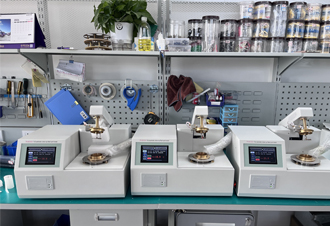 English
English


gas chromatography instrument
Gas chromatography (GC) is a powerful analytical technique widely used for separating and analyzing compounds that can be vaporized without decomposition. It plays a critical role in various fields, including environmental monitoring, pharmaceuticals, food safety, and petrochemicals, due to its efficiency, sensitivity, and precision.
The core components of a gas chromatography instrument include an inlet system, a column, a detector, and a data processing unit. In the inlet system, the sample is introduced, typically in a vaporized form. This is achieved through methods such as direct injection or headspace sampling, where the volatile components are extracted from a mixture.
The heart of the gas chromatograph is the column, which is often packed with a stationary phase material that interacts with the sample components. When a sample is injected, it travels through the column, and different compounds encounter varying degrees of interaction with the stationary phase, leading to their separation as they elute at different times. The length, diameter, and packing material of the column are critical parameters that influence separation efficiency and resolution.
Once the separated compounds exit the column, they enter the detector, which is responsible for identifying and quantifying them. Common types of detectors used in GC include flame ionization detectors (FID), thermal conductivity detectors (TCD), and mass spectrometers (MS). The choice of detector depends on the nature of the sample and the required sensitivity and specificity.
gas chromatography instrument

Data obtained from the detector is processed and displayed on a computer, allowing for detailed analysis of the sample. The output often includes a chromatogram, a graphical representation of the separation process, where the retention time and peak area correspond to specific compounds and their concentrations.
One of the significant advantages of gas chromatography is its ability to analyze complex mixtures with high resolution and minimal sample preparation
. However, it is essential to note that GC is primarily suitable for volatile and thermally stable compounds, limiting its application for certain substances.In summary, gas chromatography is a vital tool in analytical chemistry, providing rapid and accurate results for various applications. Its continued evolution, along with advancements in technology, ensures its relevance in addressing contemporary scientific challenges.
-
Differences between open cup flash point tester and closed cup flash point testerNewsOct.31,2024
-
The Reliable Load Tap ChangerNewsOct.23,2024
-
The Essential Guide to Hipot TestersNewsOct.23,2024
-
The Digital Insulation TesterNewsOct.23,2024
-
The Best Earth Loop Impedance Tester for SaleNewsOct.23,2024
-
Tan Delta Tester--The Essential Tool for Electrical Insulation TestingNewsOct.23,2024





